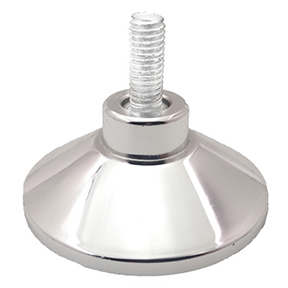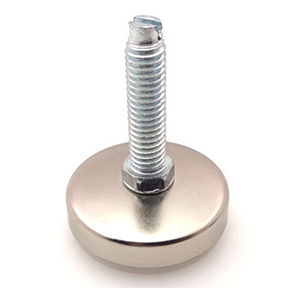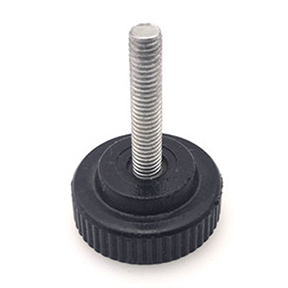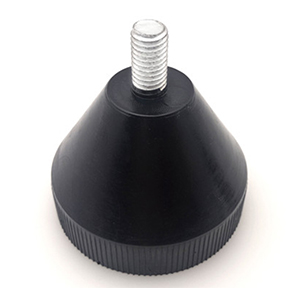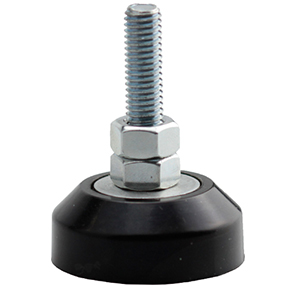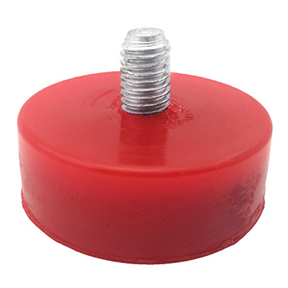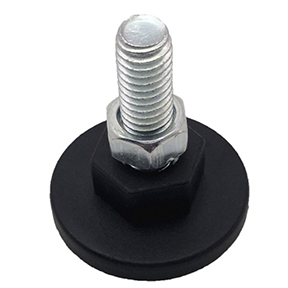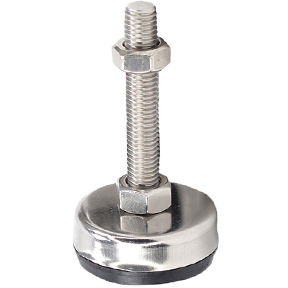Electroplating plastic auto parts handle Fracture Analysis
2013-07-10 15:46:07
For part of the handle member in electroplating plastic auto on / off durability test fracture occurred during issues were studied. Using infrared spectroscopy (IR), differential scanning calorimetry (DSC), thermal gravimetric analysis (TGA) and scanning electron microscopy (SEM) on the fracture handle and unbroken handle plastic part of the material, structure and morphology were analyzed identify the fault reasons and put forward the corresponding improvement.
■ China Electric Apparatus Research Institute Peng Jian Tao Friends Season Huli Fen
Xiao Li Luo Liqiong
A Company B Company designs, manufactures plastic car handle, the handle member for on / off durability test process of discovery, a few handle after endurance test 2000 times broken, and most of the handle until the test 50,000 times none fracture. To identify the cause of the problem, taken from the handle plastic samples, the related pilot studies.
Test Part 1
1.1 Test Samples
The plastic part of the PC / ABS alloy.
1.2 Test Instruments
a infrared spectroscopy (IR): Nexus 670, Nicolet, USA.
b differential scanning calorimetry (DSC): DSC 204, German NETZSCH company.
c. Thermal gravimetric analysis (TGA): TG 209, Germany NETZSCH company.
d. Scanning electron microscopy (SEM): JEOL JSM-6330F, JEOL Ltd..
1.3 Test Methods
a. Measured with a Nexus 670 FT-IR spectra. Instrument resolution of 4 cm-1, the number of sweeping measures is 32. Using KBr pellet sample preparation (scraping samples mixed with KBr, pressed into tablets posttest infrared spectroscopy).
as measured with a DSC 204 b of the glass transition temperature of the sample
(Tg). Sample amount of 5-10 mg, in N2 (N2 flow rate of 60 mL / min) under the protection test, a heating rate of 10 0C/min, test execution IS0 1, I357 standards.
c for samples with TG 209 TGA. Samples dosage 5-10 mg, shielding gas and purge gas are N2, flow rates of 1 0mL/min and 20 mL / min, heating rate of 20 0C/min, test execution IS0 11358 standard.
d SEM study was conducted by using the on / off durability test result and other parts of the fracture surface morphology, in addition to the on / off test result of the fracture surface, the other sections are frozen in liquid nitrogen produced brittle fracture.
2 Results and discussion
2.1 Infrared Spectroscopy
Figure 1 is a broken handle and the handle of qualified local photos, fracture location identified in Fig.
2.2 Analysis of differential scanning calorimetry
Figure 3 is a DSC curve of the plastic handle, the curve can be drawn according to the plastic components of the glass transition temperature (Tg), Table 1. Low temperature of the ABS Tg, high temperatures for the PC Tg. Seen from Figure 3, the handle broken plastic handle and pass no significant difference between the Tg of the composition, it also proves that the handle broken handle and qualified plastic components basically no big difference.
2.3 Thermal gravimetric analysis
Figure 4 is a TGA curve of the plastic handle, the curve can be obtained by the initial decomposition temperature of the plastic and the sample at 820 ℃ residue (Table 2). TGA curve against "S" shape, with only a "ladder" to indicate broken handle plastic handle and pass without serious phase separation. From Table 2, breaking the plastic handle decomposition residual sample was slightly higher than the pass handle, indicating that the two slightly different composition of the plastic handle.
2.4 Scanning electron microscopy analysis
The broken handle by opening / closing the durability test result of the fracture surface is named section 1 and section 1 to the corresponding section named qualified handle section 3, 5, 1 and section 3 is a sectional SEM photograph. Figure 5 shows that, although the corresponding parts, but have very different cross-sectional shape. Breaking the plastic handle larger particle dispersion was dispersed, the dispersion of the dispersed phase, ABS and PC interfaces are relatively poor adhesion, which is the main cause the handle is easily broken.
The broken part of the handle 1 is different from the cross sectional named section 2, and section 2 corresponding qualifying named cross section of the handle 4, Figure 6 is a section 2 and section 4 of the SEM photograph. Seen from Figure 6, passing the handle and fracture non-supporting portion of the handle section are relatively uniform; compared with the same cross section of the handle different SEM photograph (Figure 5a Figure 6a, Figure 5b and Figure 6b), can be found in different sections of different shape than large, the ON / OFF during the durability test site of fracture (such as section 1 and section 3) of relatively stable shape, which may be the material in the mold and injection of different mobility related to the different locations.
3 Conclusion
Whether breaking the handle or the handle of qualified non-uniform cross-section supporting parts, indicating plating on plastic parts did not affect the internal structure; profiled handle mold structure is irrational led to uneven flow of material in the mold center, especially in supporting the fracture site location far away from the mold injection stream crossings, which were associated with the handle break a relationship. Therefore, it is recommended to change the position of runner mold, the support from the stream crossing location closer; modify the mold, so that more rounded corners runner; Meanwhile, pay attention to controlling the injection temperature phase mold temperature, making the process more stable. After taking these steps, you can make the support more stable parts of the form, strength increases, not broken.
Previous:Single handle control bridge grab crane application Next:USB interface technology in a variety of gamepad control system application
Related News
- Fracture repair knowledge ruled handwheel handle
- Troubleshooting ruled bakelite hand wheel and troubleshooting
- Ruled handwheel is a natural bakelite handwheel
- Bakelite valve installation, operation and maintenance
- New pressure-filled rubber mold bakelite handle
- Large hydro elastic metal plastic Thrust Bearing Technology
- Our robot industry development trends
- CNC machine tools towline Forecast
- Rotating the handle needle valve
- Rotation of the handle shut-off valve


